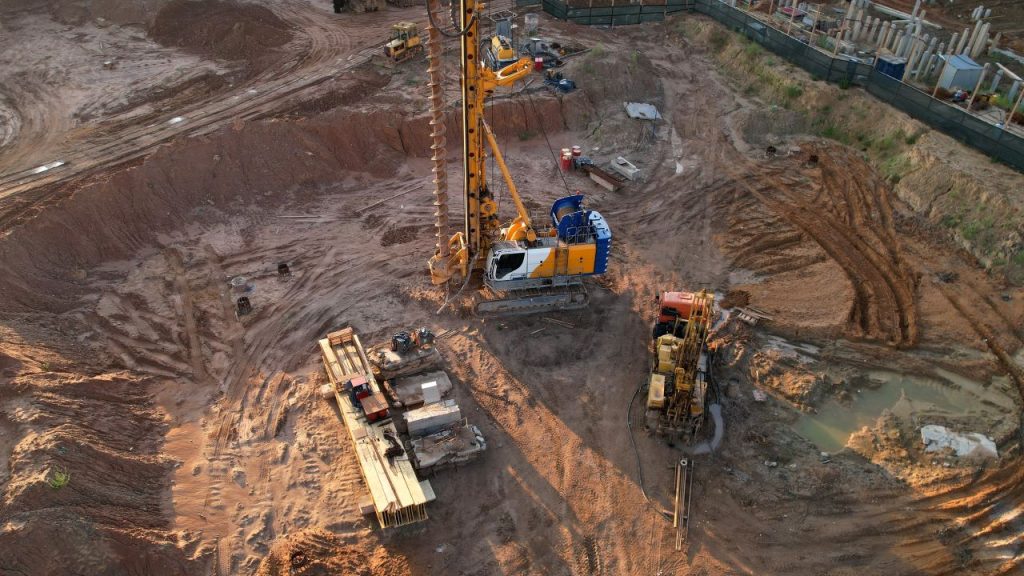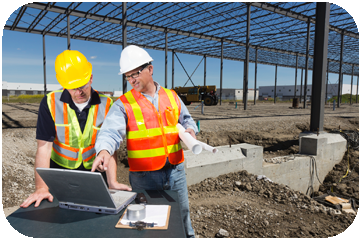Checking out the Benefits of Geo Tech Engineering for Urban Planning
Checking out the Benefits of Geo Tech Engineering for Urban Planning
Blog Article
Recognizing the Comprehensive Function of Geotechnical Engineers in Ground Investigation and Dirt Analysis for Building Projects
Geotechnical designers are essential to the success of construction tasks, supplying crucial insights via detailed ground investigations and soil analysis. Their proficiency in evaluating dirt actions and utilizing sophisticated screening methods educates critical decisions that promote structural integrity and safety. By working together and recognizing potential risks with multidisciplinary teams, these professionals dramatically influence job end results, including efficiency and cost-effectiveness. However, the details of their function frequently prolong past these features, motivating a deeper expedition into the techniques they utilize and the implications of their findings on total project feasibility.
Duty of Geotechnical Engineers
The essential function of geotechnical engineers in construction tasks can not be overemphasized, as they offer crucial insights into dirt behavior and website problems. These specialists are charged with analyzing the viability of the ground for various types of frameworks, guaranteeing safety and security throughout the building and construction procedure. Their proficiency encompasses a wide variety of tasks, including site characterization, soil sampling, and research laboratory testing, which are important for establishing the mechanical and physical homes of the dirt.
Geotechnical engineers utilize their findings to establish foundational layouts that suit load-bearing needs and reduce dangers associated with soil incline, settlement, and liquefaction stability. They play a critical function in determining potential risks, such as groundwater fluctuations and contamination, which can significantly influence job viability. Additionally, they team up with engineers, civil designers, and service providers to make certain that geotechnical considerations are incorporated right into the total layout and construction phases.
Ground Investigation Strategies
Ground investigation methods create the backbone of geotechnical design, allowing designers to gain a detailed understanding of subsurface problems. These strategies are necessary for evaluating dirt residential properties, determining groundwater levels, and recognizing potential geological hazards.
Usual methods include borehole drilling, which permits the extraction of dirt examples at different depths, offering essential data for evaluation. Furthermore, in situ testing methods, such as Conventional Infiltration Examinations (SPT) and Cone Infiltration Examinations (CPT), are utilized to evaluate dirt stamina and density straight in the ground.
Geophysical techniques likewise play a significant function in ground investigations. Strategies such as seismic surveys and electric resistivity tomography assistance examine subsurface qualities without comprehensive excavation. geo tech engineering. These non-invasive techniques are particularly helpful in huge or sensitive areas where disruption need to be decreased
Moreover, exploratory trenches can be excavated to visually inspect dirt layers and recognize any type of anomalies. Each of these methods contributes special insights, permitting geotechnical designers to create precise website assessments and educate style choices. In recap, a mix of these ground examination techniques is crucial for effective building and construction jobs, ensuring security and structural honesty.
Dirt Analysis Methods
Soil analysis methods are crucial for comprehending the physical and chemical residential properties of soil, which directly affect the design and building and construction of structures and other structures. Numerous methods are employed to analyze soil attributes, making sure that geotechnical engineers acquire exact data for educated decision-making.
One frequently utilized approach is grain size evaluation, which determines the distribution of fragment sizes within a soil sample. This is crucial for classifying dirt types and anticipating their habits under lots. An additional necessary method is Atterberg limits screening, which assesses the plasticity and dampness material of fine-grained soils, supplying understandings right into their design homes.

Area tests, such as Common Penetration Tests (SPT) and Cone Infiltration Examinations (CPT), offer beneficial in-situ data relating to dirt strength and stratification. Collectively, these soil analysis approaches develop the foundation of geotechnical investigation, enabling designers to create effective and safe frameworks tailored to the particular conditions of the site.
Danger Reduction Approaches
Carrying out reliable danger reduction approaches is important for geotechnical engineers to address prospective challenges in building projects. These techniques are essential in identifying, analyzing, and managing threats connected with dirt conditions, site stability, and groundwater changes, which can adversely impact task end results.
One main strategy entails carrying out extensive website investigations that use sophisticated geophysical techniques and here thorough dirt tasting. By obtaining exact information on subsurface conditions, engineers can make enlightened choices on design and building and construction techniques. In addition, utilizing predictive modeling devices enables for the simulation of various circumstances, making it possible for engineers to visualize potential troubles and implement precautionary procedures.
In addition, developing clear communication channels among job stakeholders cultivates a collective technique to take the chance of monitoring. Normal updates and assessments ensure that all parties are conscious of the evolving site problems and can adjust their approaches as necessary.

Effect On Building And Construction Jobs
The efficiency of threat reduction strategies straight affects the general success of construction projects. Geotechnical designers play an essential function in this domain, as their knowledge in ground examination and dirt evaluation notifies crucial choices throughout the building and construction procedure. By precisely analyzing soil conditions and determining possible hazards, these professionals enable job groups to create effective services that reduce dangers associated with ground instability, water infiltration, and other geotechnical obstacles.
The impact of extensive geotechnical evaluation is noticeable in different facets of building and construction projects, including explanation expense monitoring, task timelines, and structural stability. Early recognition of concerns permits prompt interventions, reducing pricey delays and budget overruns. Furthermore, a comprehensive understanding of website problems boosts the style and design procedure, making certain that structures are constructed to endure ecological pressures and possible all-natural disasters.
Inevitably, the payments of geotechnical engineers are integral to the effective execution of building and construction tasks. Their work not only promotes safety and security and compliance with policies however additionally improves the lasting sustainability of frameworks, making sure that they perform successfully throughout their designated life expectancy. The partnership between geotechnical teams and other stakeholders is vital for achieving ideal end results in building undertakings.
Final Thought
To conclude, geotechnical engineers do a vital feature in building and construction projects through detailed ground examinations and soil evaluations. Their expertise in assessing soil actions, employing various investigation methods, and implementing risk reduction strategies considerably adds to the architectural stability and security of constructed atmospheres. By working together with multidisciplinary teams, these specialists enhance task efficiency and guarantee conformity with safety and security requirements, inevitably resulting in effective try this website building and construction results and minimized possible dangers.
Geotechnical designers are essential to the success of construction projects, supplying necessary insights through detailed ground examinations and dirt analysis.The critical function of geotechnical engineers in building tasks can not be overemphasized, as they offer vital understandings right into dirt habits and website conditions. Their competence includes a broad range of activities, consisting of website characterization, dirt sampling, and lab screening, which are important for identifying the mechanical and physical buildings of the soil.
By properly evaluating soil conditions and recognizing prospective hazards, these experts allow task teams to develop reliable solutions that minimize threats linked with ground instability, water infiltration, and other geotechnical obstacles.
In final thought, geotechnical designers perform an essential feature in construction projects with comprehensive ground investigations and dirt analyses.
Report this page